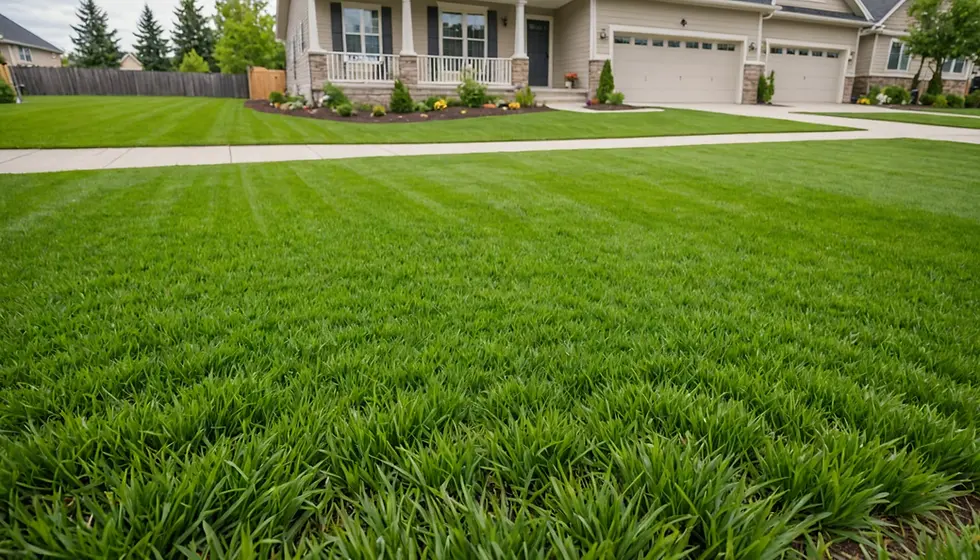What factors should you consider when deciding between sod and seed for your new lawn?
- Zachary Hutnick
- Feb 17
- 4 min read
When you want to create a new lawn, the choice between sod and seed is one of the first steps. This decision is crucial because it can affect the health, maintenance, and look of your lawn for years to come. While both options have their merits, understanding their differences can lead you to the right choice for your specific situation.
Understanding Your Lawn's Needs
Understanding your lawn's specific needs is essential before deciding between sod and seed. Consider factors like climate, sunlight, and soil type. For example, Kentucky bluegrass thrives in cooler northern climates and requires at least six hours of sunlight each day. In contrast, Bermuda grass is ideal for warmer southern areas where it can soak up full sun.
Also, assess if your lawn will mostly shade or receive direct sunlight. Grass type will greatly depend on this factor. For shady spots, fescue grass may be best, while sunny patches may suit sun-loving varieties.
Cost Consideration
Cost plays a key role in the decision-making process.
Sod
Sod typically costs between $2.50 and $3.50 per square foot, depending on the grass variety and location. While it can be a higher upfront investment, sod gives you an instant green lawn that requires minimal waiting time.
Seed
Using seed is usually more budget-friendly, costing around $0.20 to $0.50 per square foot. However, you'll need to invest time and effort in soil preparation, watering, and weed control throughout the germination period, which can last several weeks. In some cases, you may have to overseed two to three times to achieve a full and lush look.
Installation Time
For those who need quick results, sod is the best option.
Sod
Laying sod can take just a few hours for a professional team or a day if you're taking on the task yourself. This instant solution means you can walk on it shortly after installation.
Seed
On the other hand, seeding a lawn can take anywhere from two to eight weeks to establish, depending on the type of grass and weather conditions. During this time, you’ll need to maintain a consistent watering routine.
Maintenance Requirements
Each option has differing maintenance needs.
Sod
After installation, sod requires regular watering and mowing. Initially, you may have to water daily for two weeks to ensure the roots establish. Watch out for pests and diseases; they can spread rapidly across your new lawn.
Seed
Seeding demands more attention in its early stage. Regular watering is critical, often needing it every other day during germination. Once the grass reaches about 3 inches, you'll have to mow it to encourage growth, which may require more mowing than sod in the initial stages.
Soil Preparation
Soil conditions matter significantly.
Sod
Proper soil preparation is essential for sod. The soil should be tested for pH and nutrient levels, and may need amendments based on those results. Correct preparation is a considerable task that may require professional assistance, especially on larger plots.
Seed
Seed preparation is equally important. Aerating, tilling, and leveling the soil creates the ideal environment for seeds to germinate. This process can be done yourself, but it may require renting equipment, increasing initial costs.
Aesthetic Appeal
Your lawn's look and feel can also shape your decision.
Sod
One of the main benefits of sod is its immediate aesthetic appeal. You can have a lush green lawn in a matter of hours, which is great for events or curb appeal.
Seed
While seeded lawns may not look perfect at first, they improve significantly over time. If you choose a mix of grass seeds, this can lead to a diverse lawn that feels more natural. For example, a fescue blend can enhance durability while providing an attractive appearance as it grows together.
Environmental Considerations
Consider how your choice impacts the environment.
Sod
Sod can come with a heavier carbon footprint due to its transportation and growing processes. For instance, the environmental cost of shipping sod over long distances can be substantial.
Seed
Using seed can be an eco-friendlier option, especially if you select native or drought-resistant grasses. Research shows that these grasses require less water and maintenance, making them more sustainable choices.
Long-Term Longevity and Resilience
Think about how well your lawn will last through foot traffic and wear.
Sod
Sod is often more resilient right after installation due to its established roots. This can lead to a lawn that withstands regular use and activity in its early days.
Seed
Seeded areas may initially look less robust, but they can develop a stronger root system over time. With proper care, many seeded grasses end up being more durable in the long run. A well-cared-for seeded lawn can withstand drought and foot traffic better than sodded grass after it’s established.
Your Path Forward
Choosing between sod and seed is a personal decision that varies based on budget, time, maintenance preferences, and environmental concerns. If you need instant results, sod is your best bet. For a more cost-effective and environmentally friendly route, seed is the way to go.
By meticulously evaluating each factor, you can create a beautiful lawn tailored to your requirements. With thoughtful planning and care, your lawn can flourish, whether you choose sod or seed. Making the right choice at the beginning will pay off in the health and beauty of your outdoor space for years to come.


Comments